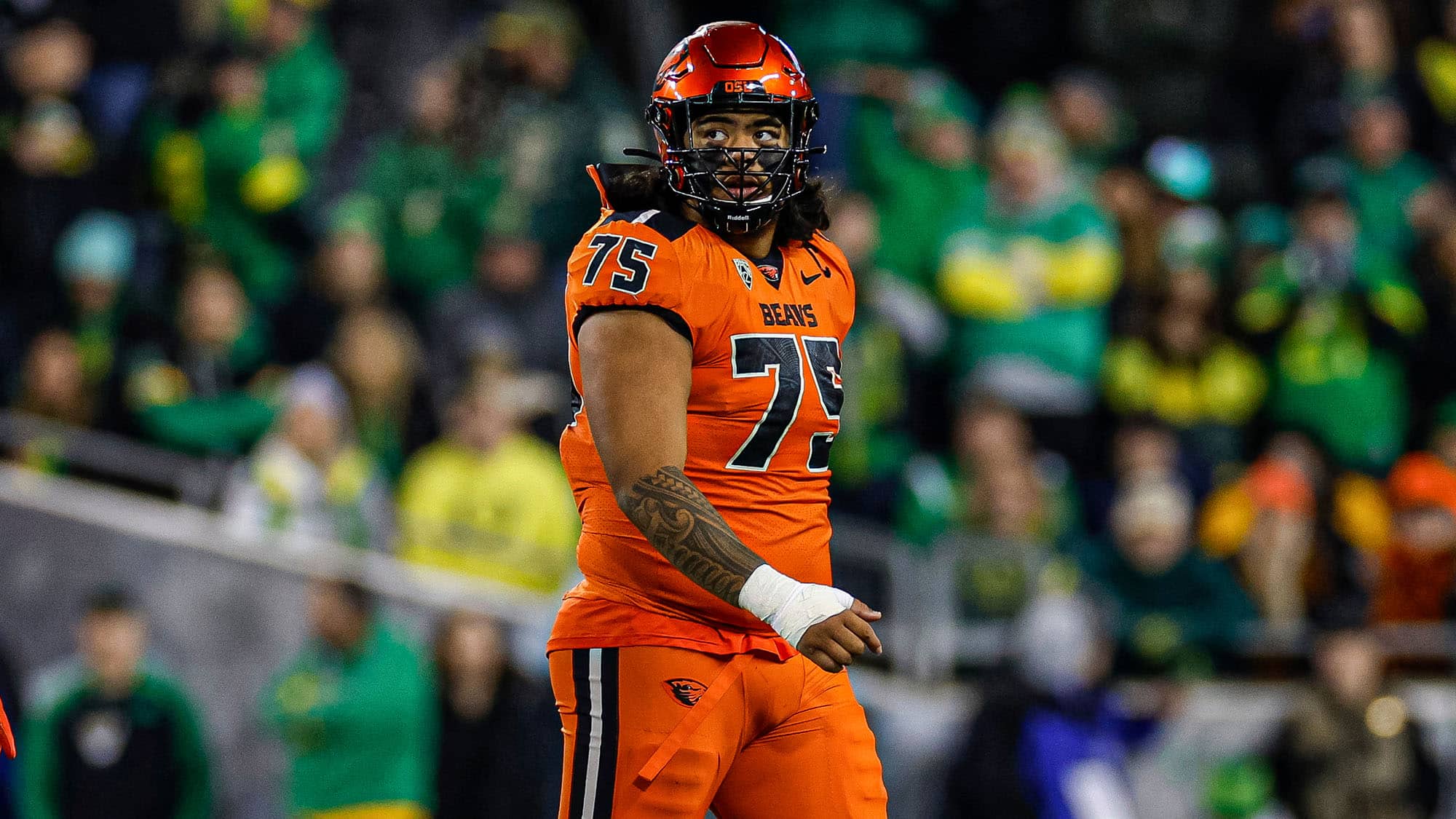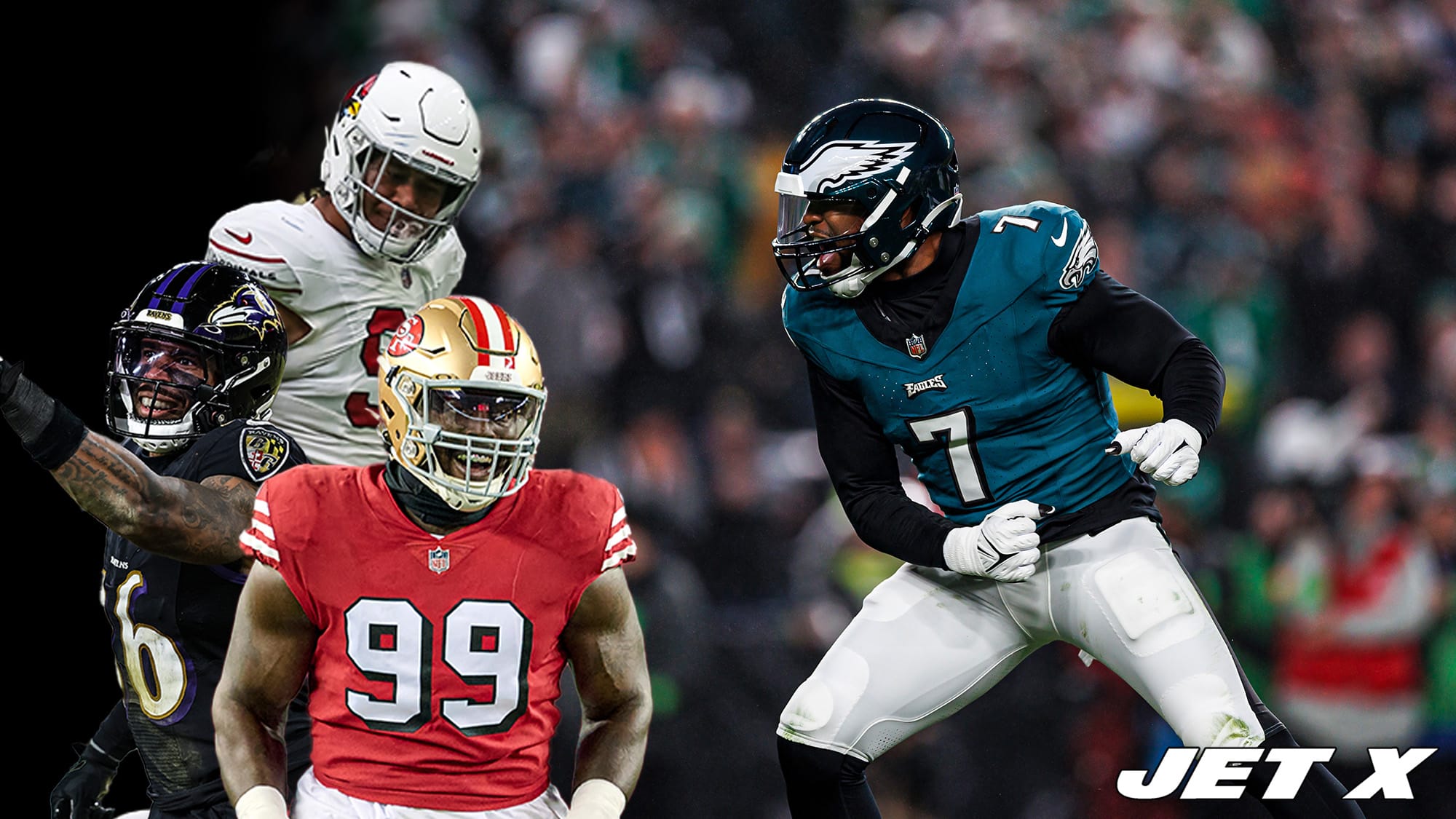Which NFL Combine drills should New York Jets fans pay the closest attention to?
Affectionately known as the “Underwear Olympics,” the drills at the NFL Combine are infamously inapplicable to actual football. Who cares how fast your left tackle can run 40 yards in a perfectly straight line? Heck, even wide receivers will rarely perform that exact action in a real game.
Despite the combine’s flaws, its one major advantage is the massive data set it has created for NFL teams to evaluate. With years and years of data in the books, the combine can be used as a measuring stick to compare all historical draft prospects on an equal plane.
The wealth of information allows us to search for trends. Which drills tend to be strong predictors of future success? Which can be ignored? And do certain drills matter more for certain positions?
Kevin Cole of Unexpected Points wrote a tremendous article that answers some of these questions. To give New York Jets fans an idea of which drills they should watch the most closely this weekend, we’ll cover some of the most important points in Cole’s article.
Cole estimated the predictive value of each drill (separated for each offensive position group) by taking data from the 2006-2019 combines and analyzing the correlation between drill performance and future NFL performance over a player’s first four seasons. To value players’ NFL performance, he used NFL Plus/Minus, a metric created by Cole to estimate the true impact of all players, regardless of position, on an equal plane.
In addition to the correlation between drill performance and future NFL performance, Cole also analyzed the correlation for draft position. He found that combine drills tend to do a substantially better job of predicting where a player will be drafted than how they will actually perform in the league – one of the most important facts to remember as you watch the combine. While the combine is somewhat valuable to predict future performance (as we will get into), keep in mind that it’s far more valuable for predicting draft slotting.
Without further ado, let’s highlight some of the most (and least) important combine drills for each offensive position group based on Cole’s findings.
Running back

- Most important drill(s) for future NFL performance: 3-cone
- Most important drill(s) for draft position: 40-yard dash, weight
- Least important drill(s) for future NFL performance: Weight, 40-yard dash
- Least important drill(s) for draft position: Vertical jump, broad jump
If you’re looking for sneaky prospects at running back, keep an eye on the 3-cone drill. It’s by far the most correlative with future NFL success, and yet, it’s only the fourth-most correlative with draft position, coming nowhere close to the valuation of weight and the 40-yard dash.
Teams tend to massively overvalue weight and speed in running back prospects. They are by far the two most heavily valued traits for determining draft position, yet the two categories each have a negative correlation with future NFL performance.
Considering how important weight is in determining draft position at running back, small running backs tend to slip. So, if a running back slips due to his size but has a good 3-cone time, he has a relatively good chance of being a steal.
Wide receiver

- Most important drill(s) for future NFL performance: 40-yard dash, weight, arm length
- Most important drill(s) for draft position: 40-yard dash
- Least important drill(s) for future NFL performance: 3-cone, broad jump, vertical jump
- Least important drill(s) for draft position: 3-cone
The 40 is by far the most heavily valued draft for wide receivers when it comes to determining draft position. While the 40 is also the most predictive drill for future success, it’s nowhere close to predictive enough to justify teams’ extreme reliance on it when ranking prospects.
After the 40, there is also a slight positive correlation with future success for arm length and weight. This suggests that bigger, lengthier prospects tend to have better success in the league, therefore justifying teams’ skepticism of smaller receivers (hello, Elijah Moore).
Despite the drama in 2019 around DK Metcalf’s terrible 3-cone time, it appears the 3-cone should be ignored for wide receivers. It has a negative correlation for both draft position and future performance.
Tight end

- Most important drill(s) for future NFL performance: Weight, 40-yard dash, 20-yard shuttle
- Most important drill(s) for draft position: 40-yard dash
- Least important drill(s) for future NFL performance: Hand size, broad jump, arm length
- Least important drill(s) for draft position: Hand size, weight, vertical jump
If you’re looking for an opportunity to get ahead of the curve at tight end, place a premium on size. Weight is by far the most predictive metric for future NFL success, and yet, it’s the second-least predictive for draft position ahead of only hand size. Big tight ends are succeeding in the league despite not getting drafted very highly. Could this mean teams are overvaluing the new-age quasi-receiver types?
In his article, Cole points out that most of the value attached to weight comes from run-blocking value accumulated by bigger tight ends. He writes, “The reality for tight end is that much of the value in the receiving game is a crapshoot, and blocking value is more easily linked to size.”
Far behind weight, the 40-yard dash and 20-yard shuttle are the only other metrics with significant predictive value for future success. You likely won’t be able to find steals based on 40 time, though, as just like at wide receiver, the 40-yard dash is by far the most predictive metric for determining the draft position of a tight end.
Offensive tackle

- Most important drill(s) for future NFL performance: 40-yard dash, 10-yard split, 3-cone
- Most important drill(s) for draft position: 40-yard dash
- Least important drill(s) for future NFL performance: Weight, arm length, broad jump
- Least important drill(s) for draft position: 3-cone
Despite my opening line in this article about how comical it is to make an offensive lineman run 120 feet in his underwear, the 40-yard dash is the most predictive metric for offensive tackle prospects in terms of both draft position and future performance.
For this reason, it’s a lot more important to watch offensive tackles run the 40 than you think. However, based on this chart, the 3-cone drill is what we should be watching the closest. The 3-cone drill is the only metric that has a negative correlation with draft position, and it’s quite significant, too. Yet, it’s the second-most predictive metric of future success, closely behind the 40-yard dash.
Teams should focus on 3-cone times when they’re seeking potential steals in the later rounds of the draft. If a player has a poor 40 time but a good 3-cone time, he will probably slip in the draft even though Cole’s data suggests the two drills have equal importance in predicting future success. Meanwhile, players with a good 40 time but a poor 3-cone time will probably go much earlier.
Interestingly, despite tackle prospects commonly being knocked for their lack of size or length, weight and arm length were found to have a negative correlation with future performance.
Interior offensive line

- Most important drill(s) for future NFL performance: 20-yard shuttle
- Most important drill(s) for draft position: 40-yard dash
- Least important drill(s) for future NFL performance: Vertical jump, 10-yard split
- Least important drill(s) for draft position: Weight, 10-yard split
Once again, the 40-yard dash is highly valued to determine draft position, and it’s also one of the most important metrics for determining future success.
However, for interior offensive linemen, it’s the 20-yard shuttle that takes the cake. Not only is it the most predictive metric of future success for interior offensive linemen, but among the five position groups analyzed in Cole’s article, it’s the single most predictive metric of future success for any position.
The Jets will probably not select an interior offensive lineman in the first round, but due to their lack of a young pipeline of talent on the interior, the position could be near the top of their shopping list in the later parts of the draft. For this reason, the Jets (and their fans) should have their eyes glued on the 20-yard shuttle when the interior offensive linemen hit the track. Treat that thing like the Daytona 500 – if it were raced by monster trucks.












Interesting.